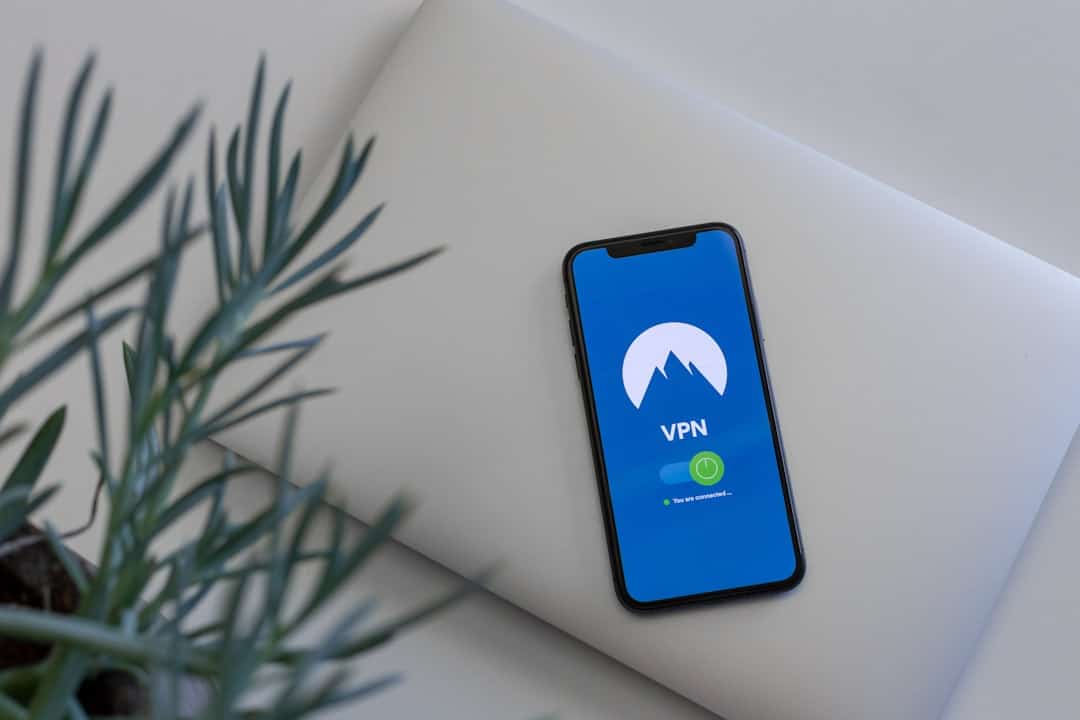Cloud security is a crucial component of modern business operations. As organizations increasingly migrate their data and applications to cloud environments, the importance of implementing robust security measures grows. While the cloud offers benefits such as cost-effectiveness, scalability, and flexibility, it also introduces new security challenges.
Without adequate security protocols, businesses face risks including data breaches, unauthorized access, and various cyber threats. The significance of cloud security is underscored by the vast amount of sensitive information stored in cloud systems. This includes customer data, proprietary business information, and other valuable assets that require protection.
A security breach can result in severe consequences for businesses, including financial losses, reputational damage, and legal ramifications. Furthermore, compliance with regulations such as GDPR and HIPAA mandates that businesses ensure the security and privacy of their data, making cloud security a legal obligation. To maintain the confidence of customers and partners, organizations must demonstrate a commitment to safeguarding their cloud-based data.
This involves implementing robust security measures to prevent unauthorized access, encrypting sensitive information, and conducting regular threat monitoring. By prioritizing cloud security, businesses can mitigate risks associated with cloud data storage and maintain the integrity and confidentiality of their information.
Key Takeaways
- Cloud security is crucial for protecting sensitive data and ensuring business continuity
- Common threats to cloud security include data breaches, insider threats, and malware attacks
- Best practices for securing data in the cloud include using strong encryption, implementing access controls, and regularly backing up data
- When choosing a cloud service provider, it’s important to consider their security measures, compliance certifications, and data protection policies
- Implementing encryption and access controls can help prevent unauthorized access to sensitive data and protect against data breaches
- Regular monitoring and updating of security measures is essential for staying ahead of evolving threats and vulnerabilities
- Educating employees on cloud security best practices can help prevent human errors and ensure compliance with security policies
Common Threats to Cloud Security
One of the most common threats is unauthorized access, which occurs when hackers gain access to sensitive data without permission. This can happen through various means, such as exploiting weak passwords, phishing attacks, or exploiting vulnerabilities in cloud infrastructure. Unauthorized access can result in data theft, manipulation, or deletion, posing a significant risk to businesses.
Data Breaches
Another common threat to cloud security is data breaches, which occur when sensitive information is accessed by unauthorized parties. Data breaches can have serious consequences for businesses, including financial losses, damage to reputation, and legal repercussions. In addition, businesses may also face regulatory fines and penalties for failing to protect their data from breaches. It is essential for businesses to implement strong security measures to prevent data breaches and mitigate the impact if they do occur.
Malware and Ransomware
Malware and ransomware are also significant threats to cloud security. These malicious software programs can infect cloud systems and cause significant damage, such as data loss or system downtime. Ransomware, in particular, can encrypt files and demand payment for their release, causing major disruptions to business operations. Businesses must take proactive measures to protect against malware and ransomware by implementing robust antivirus software and regularly updating their systems to patch vulnerabilities.
Best Practices for Securing Your Data in the Cloud

Securing data in the cloud requires a proactive approach that encompasses a range of best practices. One of the most fundamental best practices is implementing strong access controls to limit who can access sensitive data. This involves using multi-factor authentication, role-based access controls, and regular reviews of user permissions to ensure that only authorized individuals can access sensitive information.
By restricting access to data, businesses can reduce the risk of unauthorized access and data breaches. Encryption is another essential best practice for securing data in the cloud. By encrypting sensitive data both at rest and in transit, businesses can protect it from unauthorized access even if it is intercepted.
Encryption algorithms such as AES (Advanced Encryption Standard) can be used to secure data, and businesses should also consider using encryption key management to control access to encrypted data. By implementing encryption, businesses can ensure the confidentiality and integrity of their data in the cloud. Regular data backups are also crucial for securing data in the cloud.
In the event of a data breach or system failure, backups enable businesses to restore their data and minimize the impact of such incidents. Businesses should implement automated backup processes and store backups in secure locations to prevent data loss. Additionally, regular testing of backup systems is essential to ensure that they are functioning properly and can be relied upon in the event of a disaster.
Choosing a Secure Cloud Service Provider
| Factors to Consider | Metrics |
|---|---|
| Security Measures | Encryption protocols, access controls, data segregation |
| Compliance Certifications | ISO 27001, SOC 2, GDPR, HIPAA |
| Data Privacy | Location of data centers, data residency laws |
| Service Level Agreements (SLAs) | Uptime guarantees, response times, penalties for breaches |
| Incident Response and Reporting | Process for handling security incidents, transparency in reporting |
Selecting a secure cloud service provider is a critical decision that can have a significant impact on the security of your data. When evaluating potential providers, it is important to consider their security measures and certifications. Look for providers that adhere to industry standards such as ISO 27001 or SOC 2, which demonstrate a commitment to maintaining strong security controls.
Additionally, inquire about the provider’s physical security measures, such as access controls and surveillance systems at their data centers. Transparency is another key factor to consider when choosing a cloud service provider. Providers should be willing to provide detailed information about their security practices, including how they protect data, monitor for threats, and respond to incidents.
Look for providers that offer transparency into their security measures and are willing to collaborate with customers on security assessments and audits. This level of transparency can help build trust and confidence in the provider’s ability to protect your data. Service level agreements (SLAs) are also important considerations when choosing a cloud service provider.
SLAs should outline the provider’s commitments regarding security, including uptime guarantees, data protection measures, and incident response times. It is essential to carefully review SLAs to ensure that they align with your business’s security requirements and provide adequate assurances regarding the protection of your data. By selecting a provider with strong security measures, certifications, transparency, and SLAs, businesses can mitigate the risks associated with storing data in the cloud.
Implementing Encryption and Access Controls
Implementing encryption and access controls is essential for protecting data in the cloud from unauthorized access and breaches. Encryption involves converting sensitive data into an unreadable format using algorithms, making it indecipherable without the appropriate decryption key. Businesses should implement encryption for both data at rest (stored in the cloud) and data in transit (being transmitted between devices or networks).
This ensures that even if unauthorized parties gain access to the data, they cannot read or use it without the decryption key. Access controls are another critical component of securing data in the cloud. Businesses should implement strong access controls to limit who can access sensitive information and what actions they can perform with it.
This involves using multi-factor authentication (requiring multiple forms of verification), role-based access controls (assigning permissions based on job roles), and regular reviews of user permissions to ensure that only authorized individuals can access sensitive information. By implementing strong access controls, businesses can reduce the risk of unauthorized access and potential breaches. In addition to encryption and access controls, businesses should also consider implementing data loss prevention (DLP) solutions in the cloud.
DLP solutions help prevent unauthorized sharing or leakage of sensitive information by monitoring and blocking the transfer of sensitive data outside of authorized channels. By implementing DLP solutions, businesses can further protect their data from unauthorized access and ensure compliance with privacy regulations.
Regular Monitoring and Updating of Security Measures

Continuous Monitoring for Real-Time Visibility
Regular monitoring and updating of security measures are essential for maintaining strong cloud security. Businesses should implement continuous monitoring tools that provide real-time visibility into their cloud environments, enabling them to detect potential threats or vulnerabilities as they arise. This includes monitoring for unauthorized access attempts, unusual network activity, and potential indicators of compromise.
Proactive Response to Security Incidents
By regularly monitoring their cloud environments, businesses can identify and respond to security incidents before they escalate. Regular updates to security measures are also crucial for addressing new threats and vulnerabilities as they emerge. Cloud service providers regularly release patches and updates to address security vulnerabilities in their systems, and businesses must promptly apply these updates to protect their data.
Staying Ahead of Evolving Security Threats
Additionally, businesses should regularly review and update their security policies and procedures to ensure that they align with best practices and evolving security threats. By staying proactive with updates and monitoring, businesses can maintain strong security in the cloud. Businesses should also consider implementing threat intelligence solutions that provide insights into emerging cyber threats and trends.
Leveraging Threat Intelligence for Proactive Protection
By leveraging threat intelligence, businesses can stay informed about potential risks to their cloud environments and take proactive measures to protect their data. Threat intelligence solutions can provide valuable context about specific threats, enabling businesses to prioritize their security efforts effectively.
Educating Employees on Cloud Security Best Practices
Educating employees on cloud security best practices is essential for creating a culture of security awareness within an organization. Employees are often the first line of defense against cyber threats, so it is crucial that they understand how to recognize potential risks and take appropriate actions to protect sensitive data in the cloud. Training programs should cover topics such as password hygiene, phishing awareness, secure use of cloud applications, and incident reporting procedures.
Regular training sessions and awareness campaigns can help reinforce the importance of cloud security best practices among employees. These initiatives should be tailored to address specific risks associated with storing data in the cloud and provide practical guidance on how employees can contribute to maintaining strong security measures. By empowering employees with knowledge about cloud security best practices, businesses can create a more resilient defense against potential threats.
In addition to training programs, businesses should also establish clear policies and procedures for handling sensitive data in the cloud. This includes guidelines for secure use of cloud applications, password management protocols, incident response procedures, and acceptable use policies for company devices and networks. By establishing clear expectations for employees regarding cloud security practices, businesses can create a more secure environment for their data.
Overall, educating employees on cloud security best practices is an essential component of maintaining strong security measures in the cloud. By fostering a culture of security awareness and providing employees with the knowledge and tools they need to protect sensitive data, businesses can reduce the risk of potential breaches and ensure the integrity of their information in the cloud. In conclusion, securing data in the cloud is a complex but essential task for modern businesses.
By understanding the importance of cloud security and being aware of common threats, businesses can take proactive steps to protect their data from potential risks. Implementing best practices such as encryption, access controls, regular monitoring, and employee education are crucial for maintaining strong security measures in the cloud. Additionally, choosing a secure cloud service provider is an important decision that can have a significant impact on the overall security of your data.
By prioritizing cloud security and implementing robust measures to protect sensitive information, businesses can mitigate potential risks and maintain trust with customers and partners.
If you are interested in learning more about the challenges and opportunities in the metaverse, including ethical considerations, you may want to check out this article on the topic. It discusses the potential ethical dilemmas that may arise in the metaverse and how they can be addressed. This is particularly relevant in the context of cloud security in cloud computing, as ensuring ethical behavior and responsible use of data is crucial in maintaining a secure and trustworthy cloud environment.
FAQs
What is cloud security in cloud computing?
Cloud security in cloud computing refers to the set of policies, technologies, and controls deployed to protect data, applications, and infrastructure in the cloud environment. It aims to ensure the confidentiality, integrity, and availability of cloud resources.
Why is cloud security important in cloud computing?
Cloud security is important in cloud computing because it helps to protect sensitive data, prevent unauthorized access, and mitigate the risks associated with cloud-based services. It also helps to maintain compliance with industry regulations and standards.
What are the common threats to cloud security?
Common threats to cloud security include data breaches, unauthorized access, insecure interfaces and APIs, account hijacking, insider threats, and insecure configurations. Additionally, denial of service (DoS) attacks and shared technology vulnerabilities can also pose risks to cloud security.
What are the best practices for ensuring cloud security?
Best practices for ensuring cloud security include implementing strong access controls, encrypting data, regularly updating and patching systems, conducting security audits and assessments, and training employees on security awareness. Additionally, using multi-factor authentication and monitoring for suspicious activities are also recommended.
What are the different types of cloud security solutions?
Different types of cloud security solutions include data encryption, identity and access management (IAM), network security, security information and event management (SIEM), and cloud workload protection platforms (CWPP). Additionally, cloud access security brokers (CASBs) and cloud security posture management (CSPM) tools are also used for enhancing cloud security.











Leave a Reply